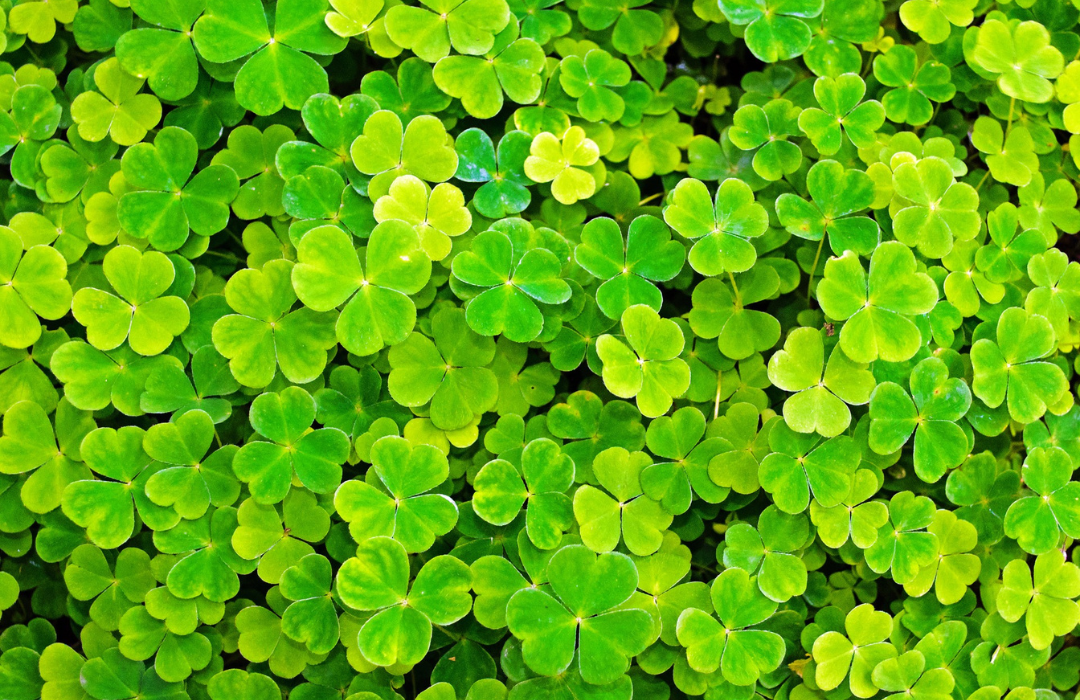Introduction
When I was young, I was always searching for a four-leaf clover. I would skip around the yard singing "I'm looking over a four-leaf clover." Sadly, I never found one. However, I never abandoned my quest. Everywhere I go, I look for a four-leaf clover. Today, August 2nd, is World find a four-leaf clover day which means I'm going outside to continue my childhood mission where I dream of scanning the vibrant green foliage and spotting the elusive gem.
The myth, mystery, and magic surrounding this tiny plant have fascinated people for centuries. But why is it so rare to find a four-leaf clover? Let's dive into the science, folklore, and expert tips that shed light on this botanical enigma.
Table of content
-
The Science Behind Four-Leaf Clovers
-
The Folklore and Symbolism
-
How to Increase Your Chances of Finding One
-
Key Takeaways
-
Frequently Asked Questions
-
Conclusion
The Science Behind Four-Leaf Clovers
Four-leaf clovers are a genetic anomaly within the world of Trifolium repens, commonly known as white clover. While most clovers display the typical trifoliate pattern—three leaves—occasionally, a mutation occurs during cell division, resulting in a fourth leaf.
Genetics and Probability
The odds of finding a four-leaf clover are approximately 1 in 5,000. This rarity stems from genetic factors. The gene responsible for producing the fourth leaf is recessive, meaning it must be inherited from both parent plants to manifest. According to research published by the NCBI, environmental stress can also trigger this mutation.
Botanical Significance
Beyond their rarity, four-leaf clovers don't hold any special advantage for the plant itself. They don't contribute to its survival or reproductive success. Instead, they serve as nature's quirky little surprise, much like finding a pearl in an oyster.
The Folklore and Symbolism
The allure of the four-leaf clover extends far beyond its scientific intrigue. Rooted deeply in cultural folklore and symbolism, these rare finds have been considered harbingers of good fortune for generations.
Historical Perspectives
The Celts believed that four-leaf clovers offered protection against evil spirits. In medieval times, finding one was thought to grant the finder the ability to see fairies. The association with luck likely stems from the sheer rarity of the occurrence, making it a special event worthy of positive connotations.
Modern-Day Symbolism
Today, four-leaf clovers continue to symbolize luck and good fortune. They often appear in jewelry designs, tattoos, and even corporate logos as emblems of positivity and success. For instance, the famous Irish Shamrock serves as a national symbol, embodying the spirit of Ireland.
How to Increase Your Chances of Finding One
While stumbling upon a four-leaf clover may seem like a stroke of luck, there are strategies to improve your odds.
Optimal Conditions
-
Location: Look in dense patches of white clover. These areas have a higher probability of genetic variation.
-
Timing: Early morning or late afternoon offers optimal lighting conditions for spotting the distinct shape.
-
Technique: Gently part the clover patch with your hands; avoid trampling the area to keep the plants intact.
Persistence Pays Off
The key is patience and persistence. Remember, finding a four-leaf clover is akin to discovering a needle in a haystack. However, armed with knowledge and determination, you increase your chances significantly.
Key Takeaways
-
The rarity of four-leaf clovers is due to genetic mutations and environmental factors.
-
Cultural folklore has long associated them with luck and protection.
-
Strategic searching in dense patches increases your odds of finding one.
Frequently Asked Questions
Are four-leaf clovers really lucky?
Yes, historically and culturally, four-leaf clovers are considered symbols of good luck and fortune. Their rarity contributes to this belief.
Can four-leaf clovers be cultivated?
While it's challenging, some gardeners have successfully cultivated patches of four-leaf clovers by selectively breeding plants with the recessive gene. However, this requires expertise and considerable effort.
What should I do if I find a four-leaf clover?
Consider preserving it as a keepsake. Pressing it between pages of a heavy book can help maintain its shape and color for years to come.
Conclusion
The quest for a four-leaf clover is more than just a leisurely pastime; it's an adventure steeped in science and tradition. Whether you're driven by curiosity or the promise of good luck, understanding why these elusive plants are so rare adds another layer of wonder to the search. Next time you're out for a walk in a meadow or garden, keep your eyes peeled—you never know when luck might be hiding right under your nose!
For more fascinating insights into botanical rarities and other natural wonders, check out resources from reputable organizations like the Encyclopedia Britannica and the US Forest Service.








